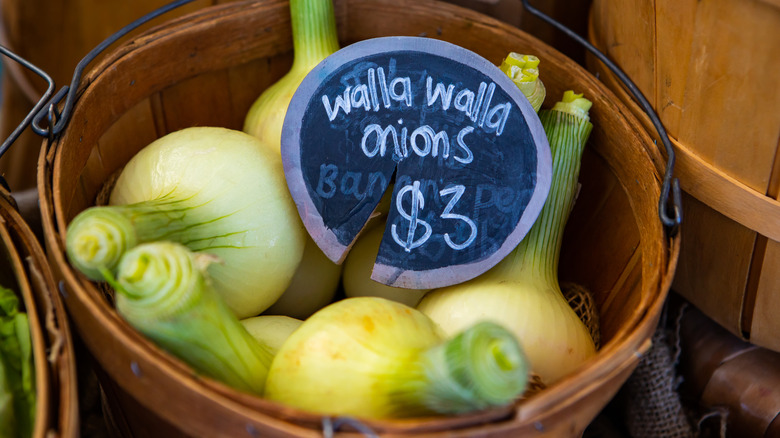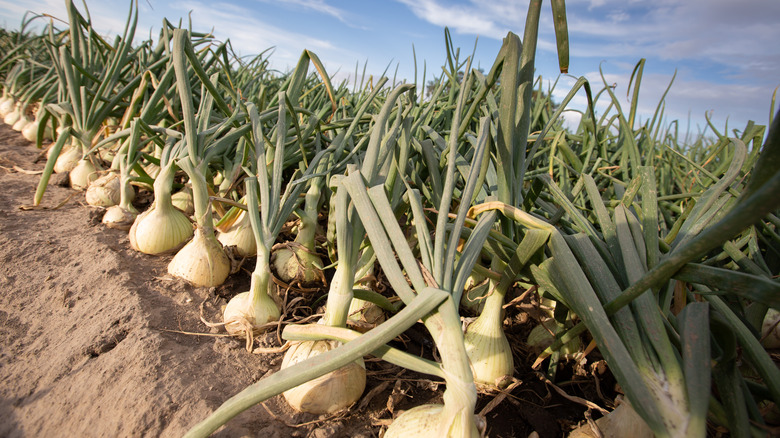Walla Walla Onions Didn't Originate In Washington State
For a small town with just 45,000 residents, Walla Walla carries an extraordinary amount of prestige. Known throughout the Pacific Northwest as a prolific producer of Washington wines, the Walla Walla Valley is a three-time winner of the Best Wine Region in America award from USA Today, drawing thousands of annual visitors to its 120 wineries, tasting rooms, grape harvest celebrations, and winery-sponsored events, notes Visit Walla Walla. But 2,800 acres of grapes aren't the only things flourishing in this fertile valley – it's also home to the aptly named Walla Walla onion.
Unlike Western Washington and Seattle's tech-heavy billion-dollar corporations, Eastern Washington is considered farm country. From apples to wheat, cherries, grapes, hops, potatoes, and roughly 300 crops, the rich volcanic soils of Washington support America's agricultural output (per Washington State Department of Agriculture). One of those crops just happens to be onions, with the National Agriculture Statistics Service reporting (via Beef2Live) that Washington lands the number three spot of the nation's overall output. None is more famous than the sassy, sweet Walla Walla onion, which holds the title as the official Washington State Vegetable.
You'd think this hometown hero of onion fame would be native to the Walla Walla Valley or even just to Washington State, but history tells a deeper story.
A long way from home
As the tale goes, the Walla Walla onion once bore the name "French onion." But that doesn't mean it came from France. Instead, a French soldier named Peter Pieri scooped up an onion seed on Italy's island of Corsica in the late 1800s and brought it on his journey to America, reveals Walla Walla Sweet Onions. He landed in the Walla Walla Valley along with scores of other Italian immigrants who thrived within the gardening and farming communities. Pieri planted the seed and, along with other immigrant neighbors and their descendants, cultivated it to produce the hardy sweet onions now bearing the valley's name.
Though an icon in the world of onions, the Walla Walla actually occupies only about 500 acres in Southeastern Washington, tended by 20 farming families, according to the National Onion Association. They grow for roughly eight months before a summer harvest, which yields large, sweet bulbs weighing as much as 2 lbs. with a circumference up to 5 inches. The mild "no-tears" flavor comes from low sulfur levels, about half as much as other onion varieties.
Like Peter Pieri, the father of America's cultivated Walla Walla onions, these sweet earth offerings take long journeys, landing in kitchens and restaurants across Canada, Southern California, and the Pacific Northwestern states.

